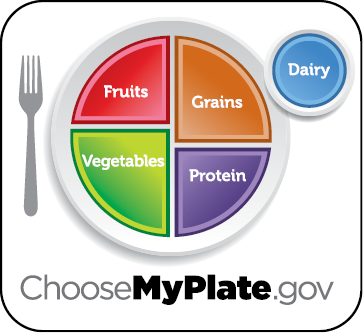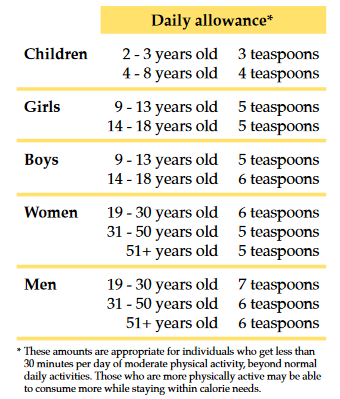Know Your Fats (FN725, Reviewed Aug. 2016)
Availability: Web only

Not all fats are the same. To help us sort out information about nutrition, the food icon at www.ChooseMyPlate.gov can help us choose a healthy eating plan that’s personalized for our age, sex and activity level.
Try these questions
1. True/False: Oils are fats that are liquid at room temperature.
2. True/False: Oils can come from plants and fish.
3. What types of foods do Americans regularly consume to get enough oil in their diet?
a. nuts
b. fish
c. cooking oil
d. salad dressing
e. all of the above
The answers are 1. True; 2. True; 3. e
Most people consume oils through foods they normally eat. Some oils can be added during cooking. The most common cooking oils are canola, corn, cottonseed, olive, safflower, sunflower and soybean oil.
Sorting through Words Describing Fats and Oils
Foods containing “monounsaturated” and “polyunsaturated” fats are more beneficial to your health than foods high in “saturated” fats. Monounsaturated fats have single double bonds in their chemical structure (“mono” = “one”). Polyunsaturated oils have chemical structures with many double bonds (“poly” = “many”). Saturated fats have no double bonds in their chemical structure.
Most oils are high in monounsaturated or polyunsaturated fats and low in saturated fats. The exceptions to the rule are the tropical oils, such as palm and coconut oil. These oils contain saturated fatty acids, so they should be treated as “saturated fat” in the diet.
Solid fats, such as vegetable shortening, can be made from oils through a process called “hydrogenation.” During this process, “trans” fats are formed. Trans fats act like saturated fat in the diet and are considered less heart healthy than polyunsaturated and monounsaturated fats.
Limit saturated and trans fat in your diet because they tend to raise “bad” (LDL) cholesterol levels in the blood. High LDL cholesterol increases the risk for heart disease.
Selecting Fats and Oils
Oils are a major source of vitamin E for typical Americans, and they’re a source of essential fatty acids people need for good health. But don’t forget that oils contain calories. A tablespoon of fat or oil contains 120 calories. Too many calories from any source can add up to weight gain over time. The Nutrition Facts label provides information to help you make smart choices.
Consider these tips
▲ Check the Nutrition Facts label to find foods with zero trans fats.
▲ If you need fats, use those, such as oils, that are liquid at room temperature.
▲ Use oils high in monounsaturated and polyunsaturated fats and low in saturated fats.
▲ Remember, vegetable and nut oils do not contain any cholesterol.
For more information about oils and fats.
While there, find out how many servings of oils are recommended for you according to your age, sex and activity level.
For more information about nutrition, food safety and health,
How much is my allowance for oils?
Most Americans consume enough oil in the foods they eat, such as:
▲ nuts
▲ fish
▲ cooking oil
▲ salad dressings
A person’s allowance for oils depends on age, sex and level of physical activity. Daily allowances are shown in the chart.
Question: What is the daily oil allowance fora 49-year-old women? __________

Answer: 5 teaspoons

